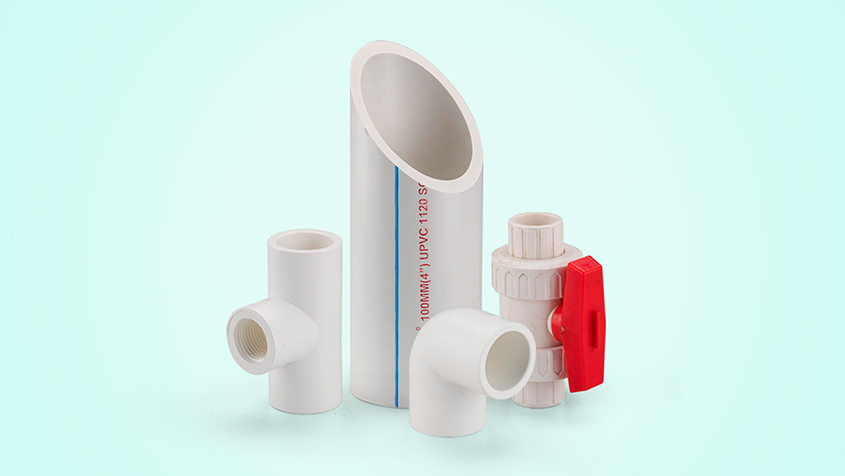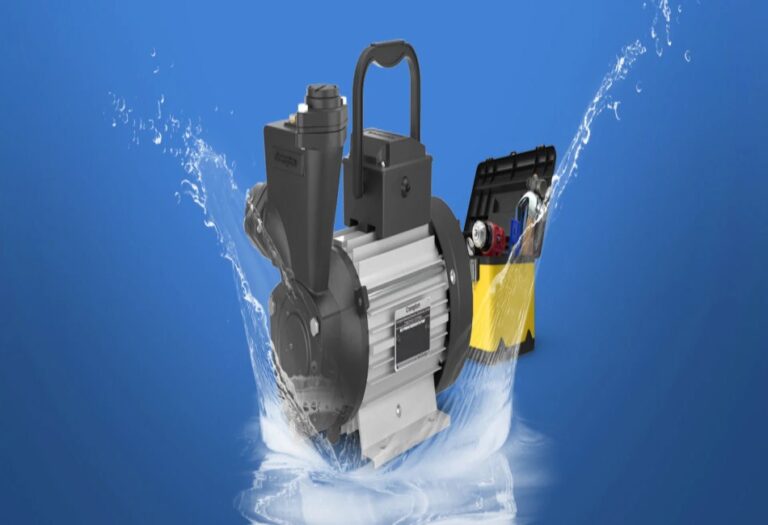Are you a homeowner who’s sick of having to deal with pipes that are oohing and constant plumbing repairs? Or maybe you’re a plumber or mastermind seeking a dependable, cost-effective pipeline result for your coming design.
still, you have arrived at the right place! moment, we’ll take a look at uPVC pipes, If so. You may ask, what exactly are uPVC pipes, and what makes them such a popular choice for plumbing and other operations.
uPVC stands for unplasticized polyvinyl chloride. uPVC does n’t contain plasticizers, unlike other plastics. This makes uPVC pipes incredibly strong, durable, and resistant to erosion. These pipes are ideal for meeting the requirements of both domestic and marketable plumbing. So, whether you’re a homeowner curious about your plumbing system or a professional looking to expand your knowledge, keep reading to discover the numerous uses, features, and sizes of uPVC pipes!
Specifications of uPVC pipes Imagine that your house is a bustling megacity with water flowing through a complex network of pipes like business. But what makes these pipes dependable and long- lasting? The answer lies in the material itself – uPVC, or unplasticized polyvinyl chloride. uPVC pipes have come the go- to choice for plumbers and homeowners likewise, and for good reason.
Let’s take a near look at the important characteristics that make uPVC pipes the stylish in the plumbing assiduity. Because of its rigid structure, uPVC is extremely resistant to cracks, impacts, and wear and tear. You can anticipate a long lifetime from uPVC pipeline systems.
snippersnapper and simple to install uPVC pipes are significantly lighter than essence pipes, making transportation and installation simple. erosion resistant Unlike some essence, uPVC is n’t susceptible to rust or erosion, icing long- term functionality indeed when exposed to humidity.
Chemical resistant uPVC exhibits excellent resistance to a variety of chemicals generally set up in ménage and artificial operations.
Cost-effective uPVC pipes offer a budget-friendly result compared to numerous other pipe accoutrements . Both the purchase and installation of them are fairly affordable. Low conservation uPVC requires minimum conservation thanks to its essential continuity and erosion resistance.
uPVC pipes are leak- evidence because their joints are strong and secure, reducing the liability of leaks and icing a steady inflow of water. Fire retardant uPVC offers a degree of fire resistance, furnishing an added subcaste of safety in your home or structure.
protean operations uPVC pipes have a wide range of uses, from plumbing systems to electrical conduit and indeed drainage operations.
Eco-friendly These pipes can be reclaimed at the end of its lifetime, making it a more environmentally friendly choice compared to some other pipe accoutrements .
Uses operations of uPVC pipes
uPVC pipes, known for their strength, affordability, and ease of use, have come a ubiquitous presence in colorful operations. Then are some of their prominent uses
Distribution of drinkable water uPVC is a safe and reliable option for moving clean water throughout homes and structures. operations in construction uPVC pipes can be used in rainspouts, rainwater harvesting systems, and indeed some structural factors. uPVC pipes are excellent for venting feasts and odors from plumbing systems because of their continuity and resistance to chemicals. Irrigation and agrarian systems uPVC’s featherlight nature and affordability make it a popular choice for soddening auditoriums and meadows. They can be used for hothouse ventilation, hydroponic systems, and indeed beast soddening systems.
Underground conduit uPVC pipes effectively cover electrical cables from damage and erosion when buried underground.
Cable operation is the process of organizing and securing electrical lines within structures to guarantee effectiveness and safety. Swimming pool systems uPVC’s chemical resistance makes it suitable for pool filtration and rotation systems.
Artificial operations uPVC pipes find use in colorful artificial settings for chemical transportation, dust collection, and other specific requirements.
The rigidity of uPVC pipes is stressed in this list. Their capability to repel colorful rudiments, chemicals, and pressures makes them a precious material across multitudinous domestic, marketable, and artificial operations.
Size options for uPVC pipes Choosing the right size for uPVC pipes can feel like navigating a plumbing maze because there are so numerous sizes available. still, the size of the pipe is determined by its intended use, and uPVC pipes come in a variety of sizes. Distribution of drinkable water Aqualife pipes range in periphery from 1/2″ to 10″ For everything you need for drinking, cuisine, and cleaning, these sizes guarantee a smooth inflow. operations in construction Ashrivad’s SWR and Low Noise SWR pipes conform to the IS standard types A and B. Grounded on the structure’s specific water pressure and inflow rate conditions, each type has its own designated sizing. Irrigation and agrarian systems Moving onto the agrarian systems, irrigation and sprinkler systems use pipes distributed under IS standard 4985. Class 1, Class 2, and Class 3 are the pressure classes used in this standard to classify pipes. The advanced the class number, the lesser the pressure the pipe can handle, icing effective water delivery to your crops.
Underground conduit We bear pipes that can support the fresh weight of the earth above for those who burrow beneath the face. IS 16098 Part 1 comes into play then. This standard specifies pipes with SN conditions – SN2, SN4, and SN8. These conditions indicate the pipe’s strength, with SN8 being the most robust option for opposing significant underground pressure.
Swimming pool systems Now, let’s take a dip into pool system pipeline. For maintaining a healthy inflow of water throughout the pool, pipes generally range from ½ inch to a much larger 6 elevation in periphery.
Artificial operations Eventually, our artificial titans bear pipes that can handle serious pressure. Then, we see a wider range of sizes, from a humble ½ inch all the way up to a whopping 12 elevation. These pipes frequently come in Schedule 40 and Schedule 80 variations, which indicate wall consistence. Schedule 80 pipes have thicker walls for handling advanced pressure operations within artificial settings.
Fittings for uPVC pipes
Imagine a lot of straight pipes who can carry water and sewage from your home but are n’t suitable to twist or turn themselves when they’ve to. They wo n’t be suitable to serve their purpose also.
So that’s where the fittings for uPVC pipes come into the picture. The connectors, appendages, elbow carouses, and T- junction makers are these clever little bias that come in a variety of sizes and shapes. They’re the cement that holds the uPVC pipe world together, relatively literally in some cases!
Imagine a brand-new house in the process of being erected. All of the candescent uPVC pipes are lined up and eager to perform their function. still, how will the main line’s water get to the kitchen gate? Enter the safe coupler, a simple yet essential fitting that connects two pipes of the same size, creating a flawless inflow.
Common types of fittings used with uPVC pipes
Couplings Couplings are used to connect two end- to- end uPVC pipes. They’re available in a variety of sizes and can be connected via thread or solvent cement. Elbows Elbows are fittings that allow for changes in direction within a pipeline system. They come in 90- degree, 45- degree, and other angle configurations to deflect the inflow of fluid.
Tees Tees are used to make branches in a pipeline system, making it possible to connect a third pipe to the main line at a 90- degree angle. Reducers Reducers are used to connect pipes of different compasses together. They can either reduce or increase the pipe size to accommodate changes in inflow conditions.
End cape End caps are used to seal the end of a uPVC pipe. They’re generally used to cover up access points or pipe ends that are not being used. appendages appendages allow for the connection between uPVC pipes and pipes made from other accoutrements similar as essence or PVC.
Ball faucets Ball faucets are used to control the inflow of fluid within a pipeline system. They’re made of a ball with a hole in the middle that can be turned to either let fluid inflow through it or stop it. Check faucets Check faucets( also known asnon-return faucets) allow fluid to inflow in one direction only, precluding backflow.
Sockets and caps Solvent cement is used to connect pipes end to end with sockets, and caps are used to permanently seal off pipe ends. Union fittings Union fittings are two corridor that can be fluently separated without cutting the pipe for conservation or form. These fittings are generally made from uPVC material to insure comity with uPVC pipes and resistance to erosion and chemical declination.
When opting fittings for a uPVC pipeline system, it’s important to consider factors similar as pipe periphery, pressure standing, and comity with the fluid being transported.
also, fittings should be installed according to manufacturer guidelines and original plumbing canons to insure a safe and leak-free system.




